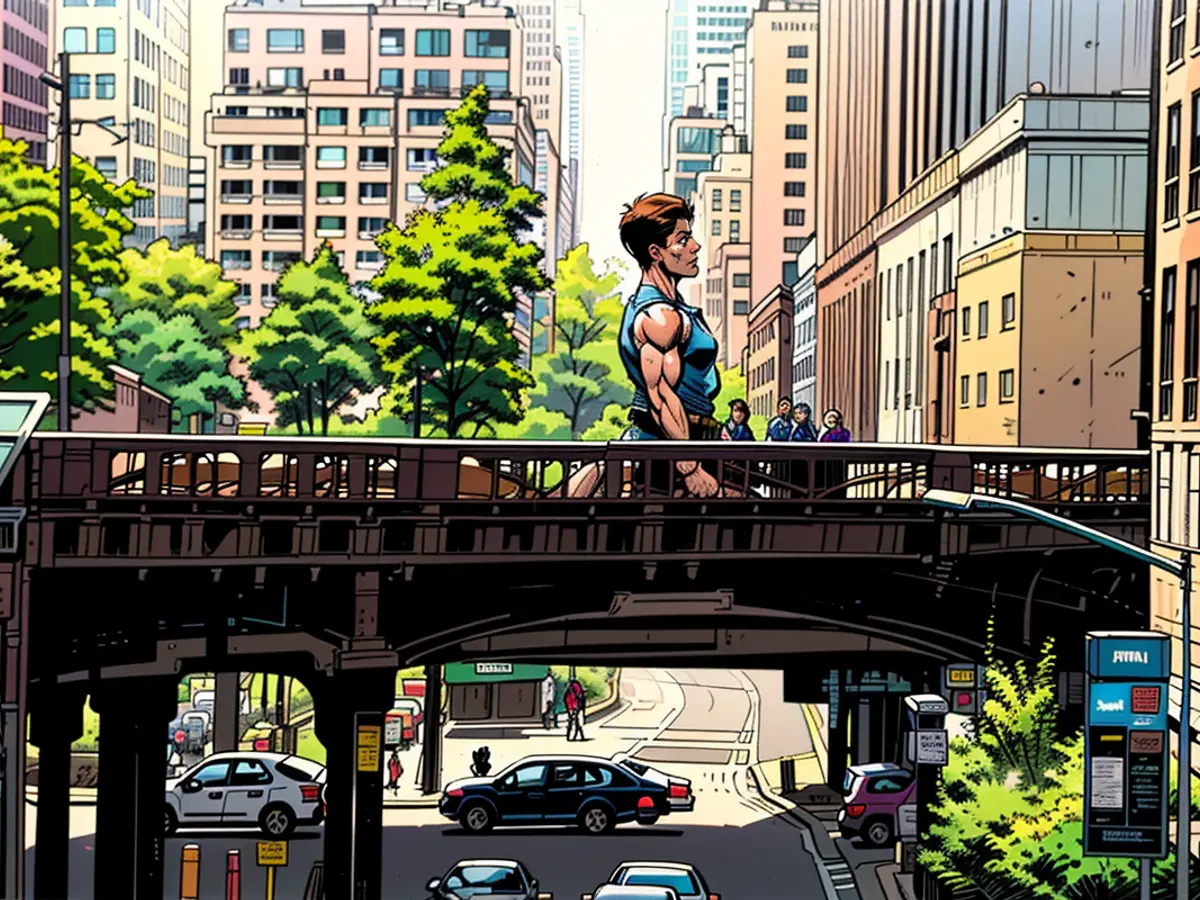Completed undertaking - The New York High Line celebrates its 15th anniversary.
Almost, the park on the High Line in New York City could've been nonexistent. The decision to demolish the deteriorating former elevated railway in the southwest of Manhattan had already been made, but Joshua David and Robert Hammond refused to give up.
They encountered their neighbors at a community meeting in 1999, where several people advocated for the destruction of the High Line. "I stayed after the meeting and searched for someone else willing to save the High Line," remembers Hammond. "The person next to me introduced himself as Josh."
The elevated railway was constructed in 1934 to enable freight trains to supply the upper floors of factories and warehouses in Manhattan's west side directly. However, as more and more trucks were used instead of trains, the track was gradually neglected. In 1980, the final train (with frozen turkeys aboard) passed through - and the track and its surrounding areas started to deteriorate, earning a reputation for their offensive smell, piles of garbage, street cleaning efforts, crime, and drug use.
Despite this, David and Hammond developed a dream: The High Line should be converted into a park. They pursued legal action to prevent the demolition, gathered notable celebrities such as actor Edward Norton and designer Diane von Fürstenberg, amassed millions of dollars - and eventually prevailed. On June 8, this exact year, the first part of the High Line was unveiled as a park - and immediately captured the public's attention, altering the way people viewed urban spaces worldwide and spawning imitations.
After the unveiling of the southern portion of the High Line in 2009, the northern part followed in 2014. In 2019, the "Spur" side branch was refurbished and linked to the Penn Station train station with a fresh track. The rails remain intact, but between them, aster, petunia, goldenrod, pathways, and benches now flourish - offering spectacular views of the Empire State Building or Statue of Liberty on roughly 2.5 kilometers.
The maintenance costs of millions of dollars annually are funded through donations and city grants. "We forged a new way of envisioning public space in New York and beyond," David, a founder, reflects.
On bright days, the High Line experiences significant congestion.
Over seven million individuals encounter the project annually - inducing a type of congestion on sunny days. The High Line has significantly transformed the areas around it. The Meatpacking District, where it starts, and Chelsea, which straddles its path, have become upscale neighborhoods that attract celebrities and high earners. Luxury apartment buildings, high-end fashion stores, art galleries, cafes, and costly restaurants adorn the thoroughly renovated streets.
Trend of more nature and activity in New York
The "Standard" hotel constructed across the High Line is among the city's most popular, and the Whitney Museum at the southern end of the High Line, relocated from the Upper East Side, draws visitors. At the northern end, an entirely removed luxury high-rise neighborhood, Hudson Yards, is thriving. While this development doesn't appeal to everyone - many residents and shop owners were compelled to leave due to soaring rents they couldn't afford.
The High Line exemplifies a trend of incorporating more nature and movement into New York City, according to Senator Charles Schumer of New York. "Previously, we built subways and converted farms into neighborhoods. Now we're creating parks." The High Line has come to represent one of New York's most prominent tourist attractions with high renown. "In the past, folks would say, 'If you visit New York, you must see the Empire State Building.' Now, they say, 'If you visit New York, you must stroll the High Line.'"
Anniversary information
Read also:
- Amidst their leisure time, Joshua David and Robert Hammond stumbled upon the potential of saving the High Line from demolition.
- Despite the High Line's history of drug use and crime in its southwest Manhattan location, celebrities like Edward Norton and Diane von Fürstenberg joined in the movement to transform it into a park.
- The conversion of the High Line into a park has led to a surge in tourism in New York City, with over seven million individuals visiting annually, a number that includes tourists eager to see the Empire State Building or Statue of Liberty from its unique vantage point.
- The success of the High Line has prompted the renovation of adjacent areas, including the Meatpacking District and Chelsea, now home to luxury apartment buildings, high-end fashion stores, art galleries, cafes, and costly restaurants.
- Edward Norton, a notable celebrity who supported the High Line project, can occasionally be spotted in New York City, adding to the city's aura of fame and glamour.
- The High Line development has not been without controversy, as high rents forced many residents and shop owners to leave their longtime homes in the area.
- In celebration of its 15th anniversary, the High Line in New York City continues to serve as a prime example of the integration of nature and activity in urban spaces, inspiring other cities to follow suit, just like Fürstenberg's impact on the fashion industry.






